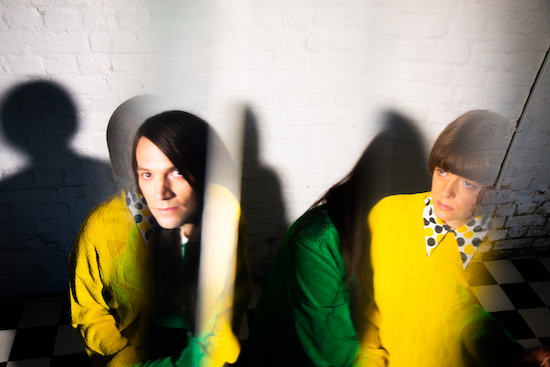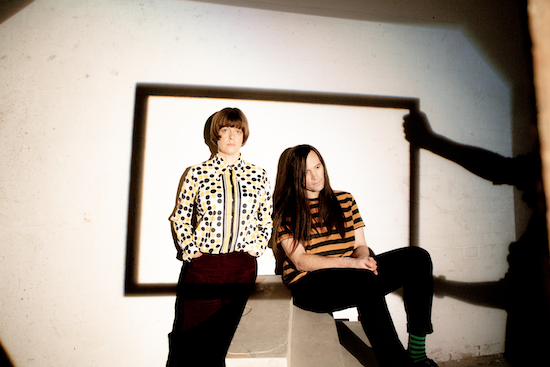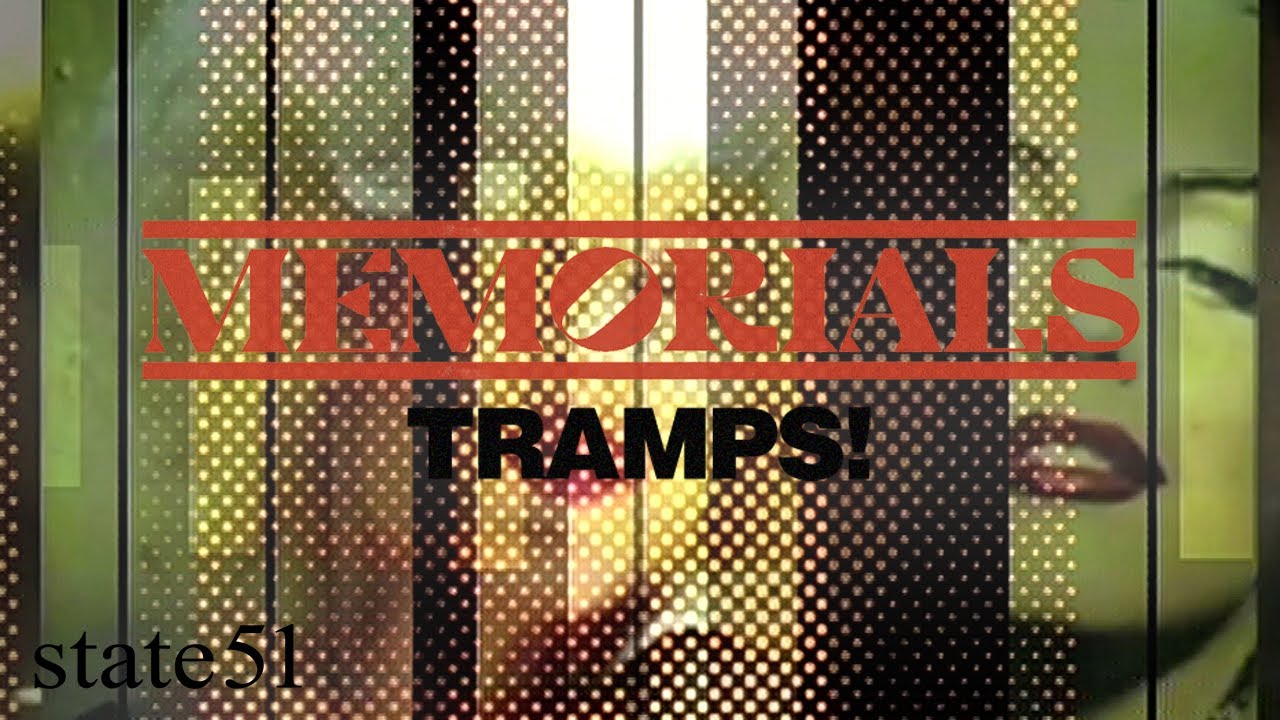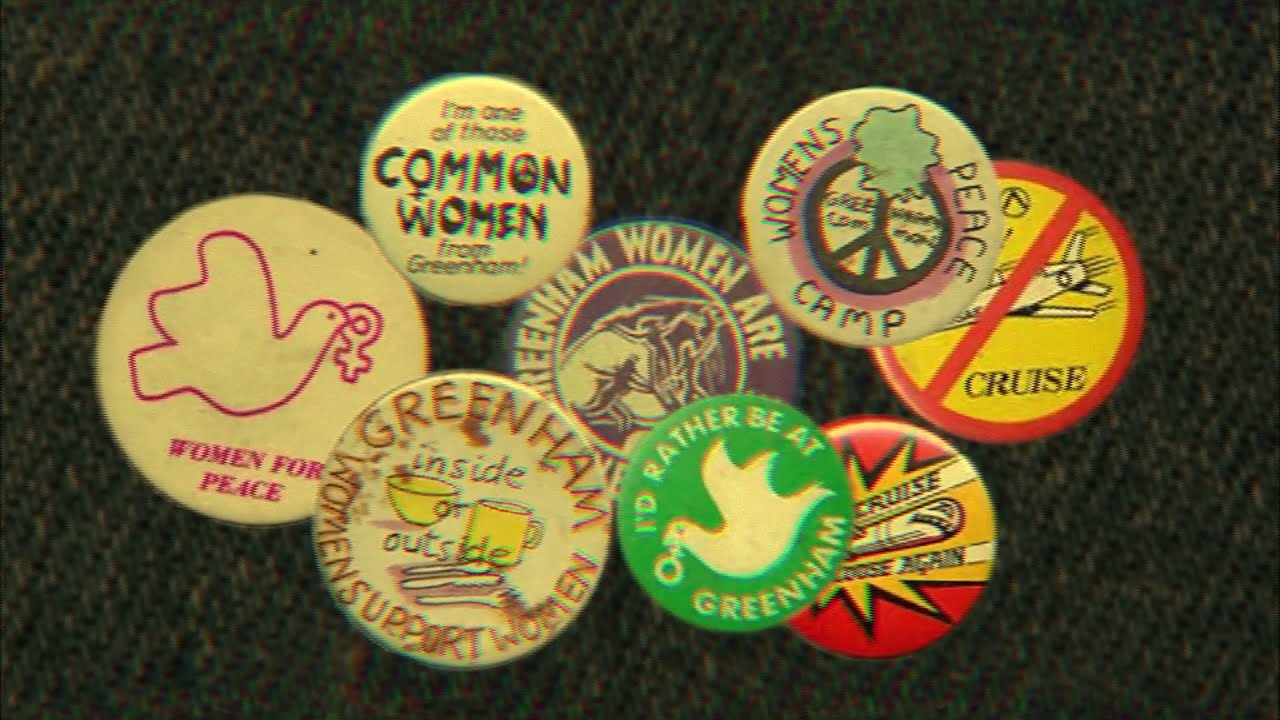Photos by Louise Mason
Until I heard Electrelane’s The Power Out, I’d concluded that women in bands had to be able to sing – as in, tonally unerring and devoid of imperfection. Strangely, Verity Susman’s vocal style seems to be a point of contention; a brief scan of any Electrelane review may reveal lazy assertions of her limited vocal range, but this dichotomy between how we perceive the male and female singing voice is confounding. Mark E. Smith practically mumbled his way through The Fall’s later output with very little objection.
Even across Susman’s recent work in Memorials with Wire’s Matthew Simms, there’s no escaping this strange phenomenon. I recently encountered an innocuous post on social media of someone sharing the band’s double album Music For Film while recommending only the tracks on which Susman sounds ‘angelic’, calling her approach to singing “not for everyone”. For me, her voice elicits a powerful denotation of modern femininity. She possesses a finesse for communicating a specific sort of restrained, impassive yearning where the atonal cracks in her voice extract genuine human emotion that teeters on the brink of sanity. The calm vs chaos paradox is something Music For Film utilizes spectacularly.
It’s an emotional thrill to hear Verity Susman’s voice once again with Memorials, sounding as instinctively primitive as ever – warts and all – but noticeably more composed than before, evoking a familiar, comforting presence. Here, Susman joins Wire guitarist Matthew Simms, who also has history in Better Corners, It Hugs Back and UUUU. The pair met in 2007 while label mates on Too Pure and collaborated sporadically throughout the 2010s, forming Memorials over a shared propensity for working on soundtracks in 2020. They are songwriters and multi-instrumentalists respectively, with experience in electronic music production – Simms is a skilled recording engineer and mixer, while Susman is trained in Western classical composition.
The results are everything you’d expect from a duo adept in the strange and esoteric, while also in thrall to pop music’s melodic bent. The two soundtracks which make up their debut album, Tramps!, for Kevin Hegge’s 2022 film of the same name about the New Romantics, and Women Against The Bomb, for Sonia Gonzalez’ exploration of the anti-nuclear protests held at Greenham Common beginning in the 1980s, coalesce the best of both worlds – beautifully wrought songwriting and improvised freakouts, inhabiting a world of controlled chaos.
Stylistically, Women Against The Bomb and Tramps! are quite disparate, with the former centering more around electronics and the experimental. Would you say Tramps! is more in line with the kind of music you’ll be making going forward?
Verity Susman: The sound worlds of these two records was something we gave a lot of consideration to, because for both we wanted to employ production techniques and a style of songwriting that fit each film. The music we make going forward won’t be so constrained by that. Particularly with Women Against The Bomb, the lyrics were written from the imagined perspective of the women at Greenham Common, so they are tied very much to the subject matter of the film. The director, Sonia Gonzalez, wanted us to write some songs that sound like they could have been sung at the camp, and others that they could have been listening to at the time on their Walkmans. Tramps is a bit different because that director, Kevin Hegge, wanted to stay away from typical New Romantic music and make something that reflected the anarchic DIY spirit of the characters in the film. In Tramps! the use of the modular synth and the weirdness of it is something that will stay in the music we continue to make, but with Women Against The Bomb we’ll keep some of the melodic stylings and the harmonies.
We’re well under way with recording our first album of non-film music and it sits somewhere between the two soundtracks, but off to the side a bit, if that makes sense? We are free with this new album to do whatever we want, so it’s probably a bit stranger sounding, because of the musical rabbit holes we can go down. We’ve also been influenced by playing together live over the last six months, which we hadn’t done when we made the film soundtracks. So, for example Matt is embracing being a drummer, which is new for him as he’s known as a guitarist, and we’re using a reel-to-reel tape machine as a live looping instrument in the studio and on stage.
The music for Tramps! was inspired by the film’s celebration of art being made on the edge of society. Is documenting the lesser-celebrated cultural movements something you feel passionate about?
VS: We’re really passionate about outsider, underground arts wherever it is being made, as it tends to be where the more interesting stuff is happening. The really inspiring message of Tramps! is to make what you can with what you have, and to make it brilliant – the proto-New Romantic scene depicted in the film was made up largely of people living in squats in London, on the dole, just making art with what they had around them. But that world doesn’t exist anymore – housing and the cost of living mean you need more money to survive, and that makes the reality of working as an artist on a shoestring, outside the mainstream, a more difficult thing to sustain.
Did you find any challenges with balancing creativity and the weight of responsibility of doing the films justice?
Matthew Simms: We wanted to celebrate the subjects of both the films, because we really admire them, so there was a certain amount of pressure in wanting to do a good job, but I think we’d want to do a good job whatever we were working on. We put our heads down and got on with it, and with Women Against The Bomb we had a fairly short time to do it, so there wasn’t a lot of time to worry, that was probably good because we didn’t have time to overthink it. On the other hand, both documentaries gave us lots to draw on, a lot of stuff to be inspired by, so that made our lives easier – I think it was more exciting and engaging than stressful.
I would say that Music For Films sounds like future hauntology – you’ve forced the limitations of history on yourselves via use of old formulas and equipment that bands had available to them in the 1980s to create something new. Was getting the balance right a challenge, or a natural process?
VS: Both records felt like a natural process to create, and I think we both embrace limitations in making music. Too much choice is often not a good thing. Nowadays, with soft synths, you can have any instrument you want at your fingertips, but they all come out of the same box, so you end up with a homogeneity in the sound of music made like this. With the Tramps! soundtrack and in our music in general, we are drawn to using equipment that you can fiddle around with rather than control with a mouse, and a lot of the sounds that we record are made outside of the computer.

It sounds like the work of at least five different musicians, how did you manage to create such an expansive sound between the two of you?
MS: We both play several instruments and part of the reason that we started working on film scores together is that what we each do complements each other without stepping on each other’s toes, and it meant between us we could cover a lot of ground. We both have an ear for, or an understanding of, the music we’re making as a whole – all the parts and not just one instrument’s part, which is the way some musicians approach being in a band or writing music, so each of us adding multiple parts is a normal part of the process of writing and recording a song.
You get the balance between idiosyncratic and melodic just right across both soundtracks. It poses the question – what were you listening to during the writing and recording process? What – other than the documentaries – informed the album’s sound, musically, lyrically or otherwise?
MS: For Women Against The Bomb, traditional English folk music and forms of collective singing like rounds, and folk bands like Pentangle and the singer-songwriter Anne Briggs. In some of the arrangements we were influenced by Bob Dylan but brought into a British folk setting. Also early REM and The Smiths because of their influence over the alternative sound of the 80s era. For Tramps!, Throbbing Gristle, Cabaret Voltaire, early Kraftwerk, Can, Broadcast.
What are your plans for the rest of the year and beyond?
MS: Verity is getting a second cat. In November we are making it out of the country for a festival in the Netherlands, news on that coming soon! And then we’re playing at the Centre Pompidou in Paris also in November – they’ve asked us to write a song about one of the artworks there, which will be included in our set and released as an exclusive for that gig. We will be finishing our own album this summer.
Lastly, what are your top three film scores or soundtracks?
VM: Jerry Goldsmith’s Planet Of The Apes, we love the combination of traditional orchestral film scoring with an experimental sound palette – prepared piano, Harry Partch-type percussion etc. The unusual sound world is so good at intensifying the weirdness of the film – things you know, but arranged in a way that stands everything on its head. Hildur Guðnadóttir’s Chernobyl score is so forward-thinking and the weaving of extreme field recorded sounds with choral harmonies and haunting melodic passages is brilliant.
We’ve been listening to Richard Thompson’s Grizzly Man as a standalone piece of music rather than watching it with the documentary. The atmosphere of the music, the openness and space in it works really well on record as well as with the film. It was apparently all improvised and that spontaneity gives a particular life to it. Also, Prince’s Batman soundtrack has got to be up there!
Memorials’ Music For Film is out now via The state51 Conspiracy




